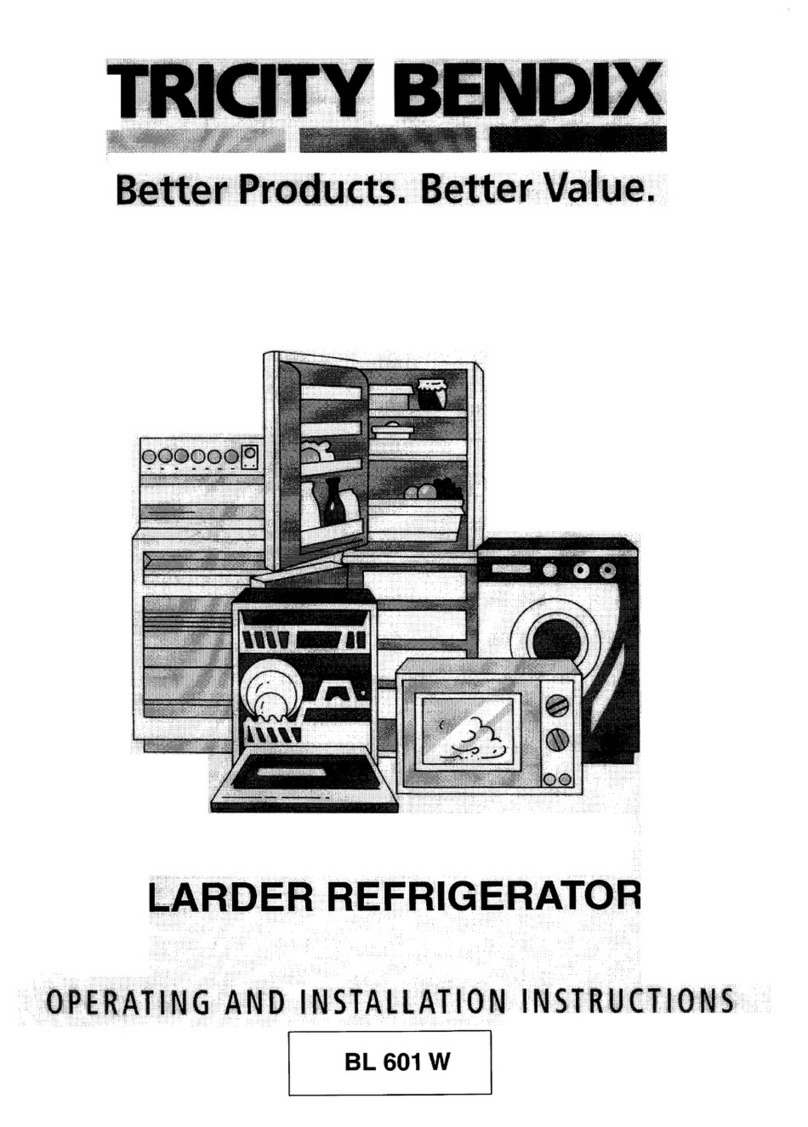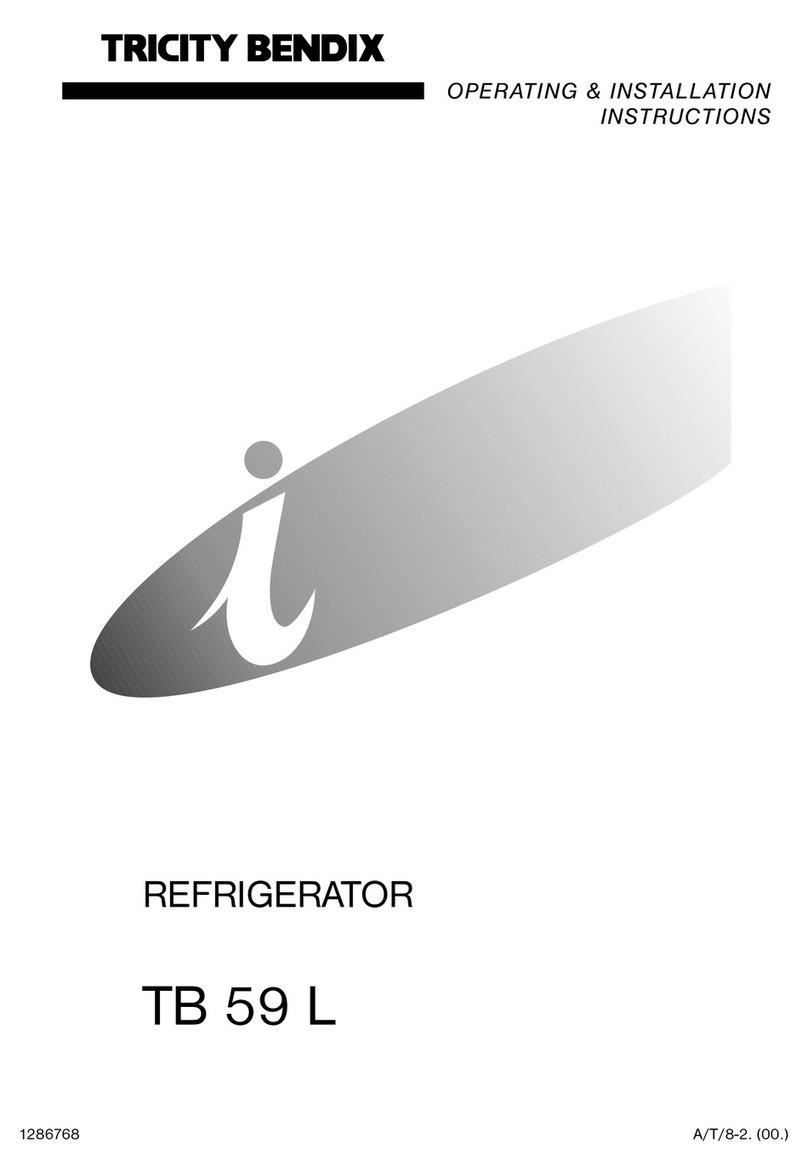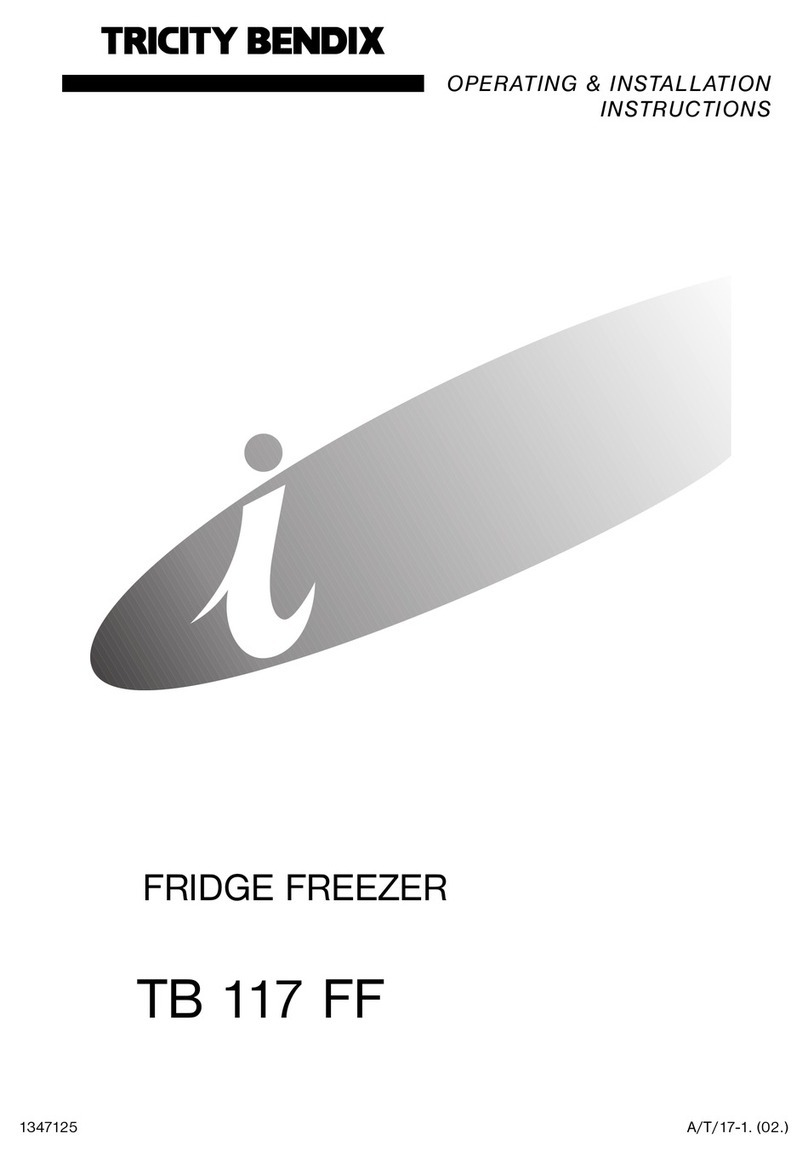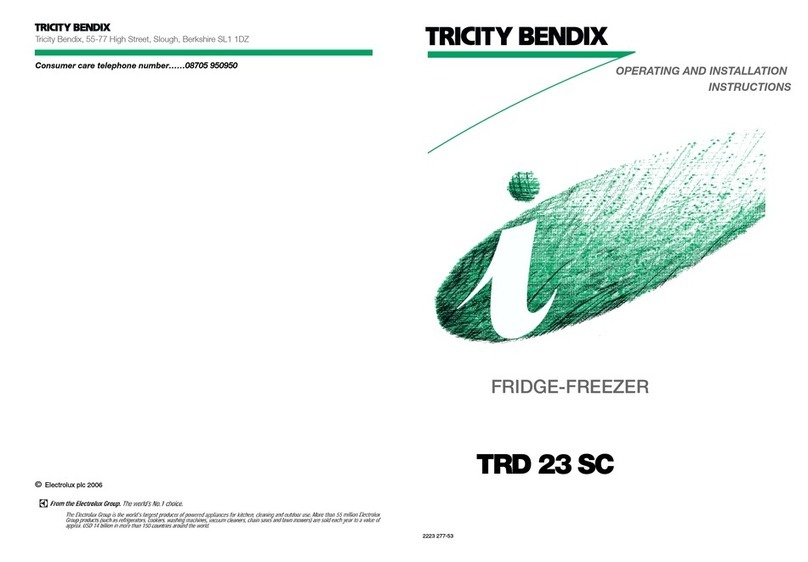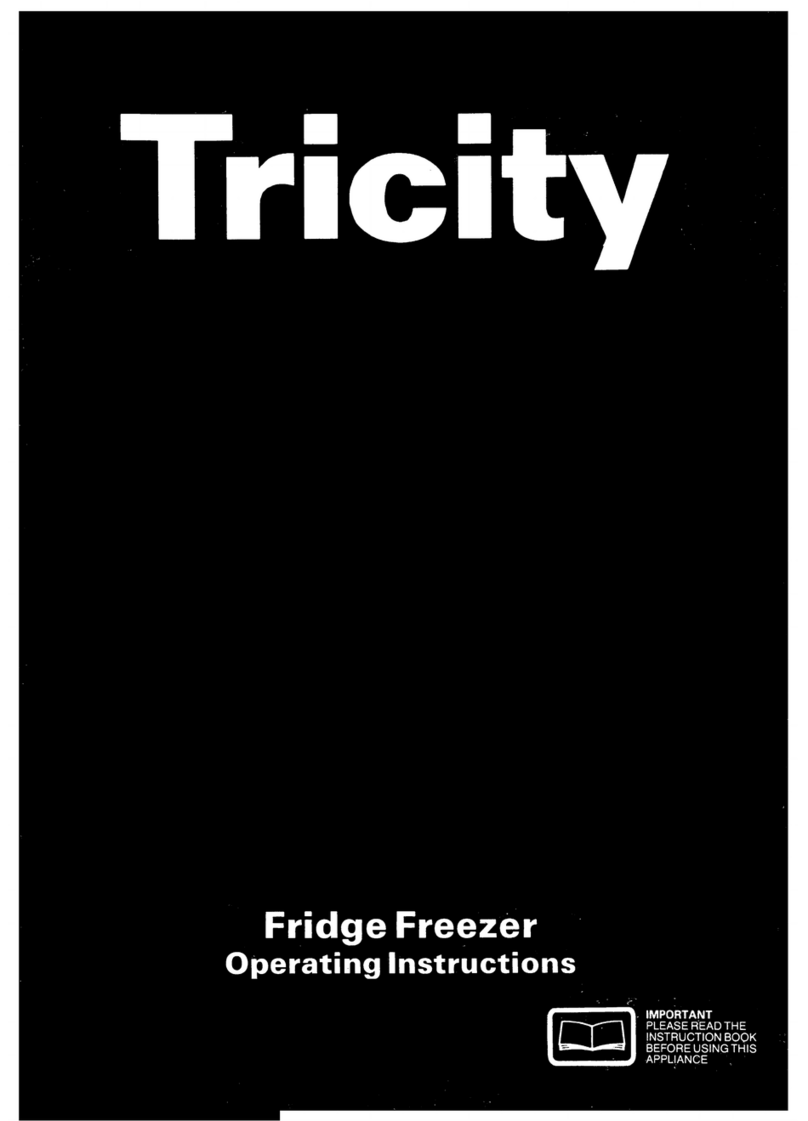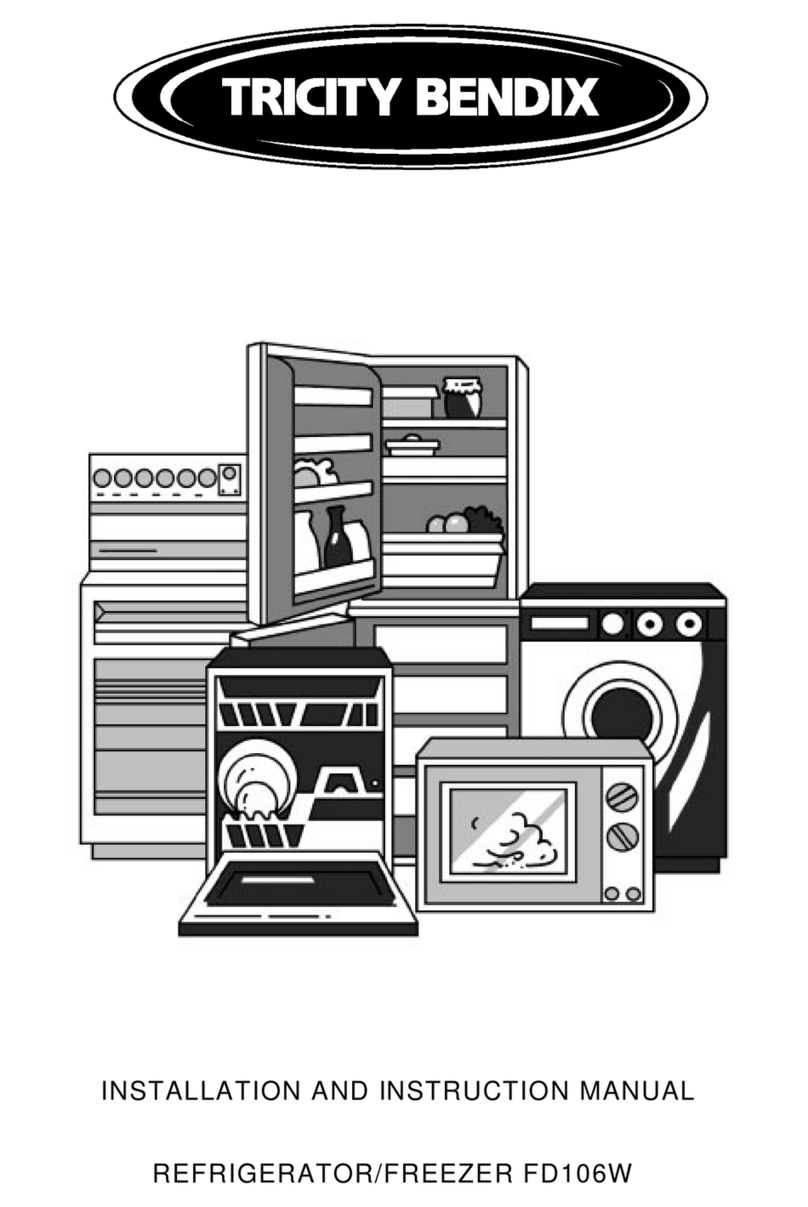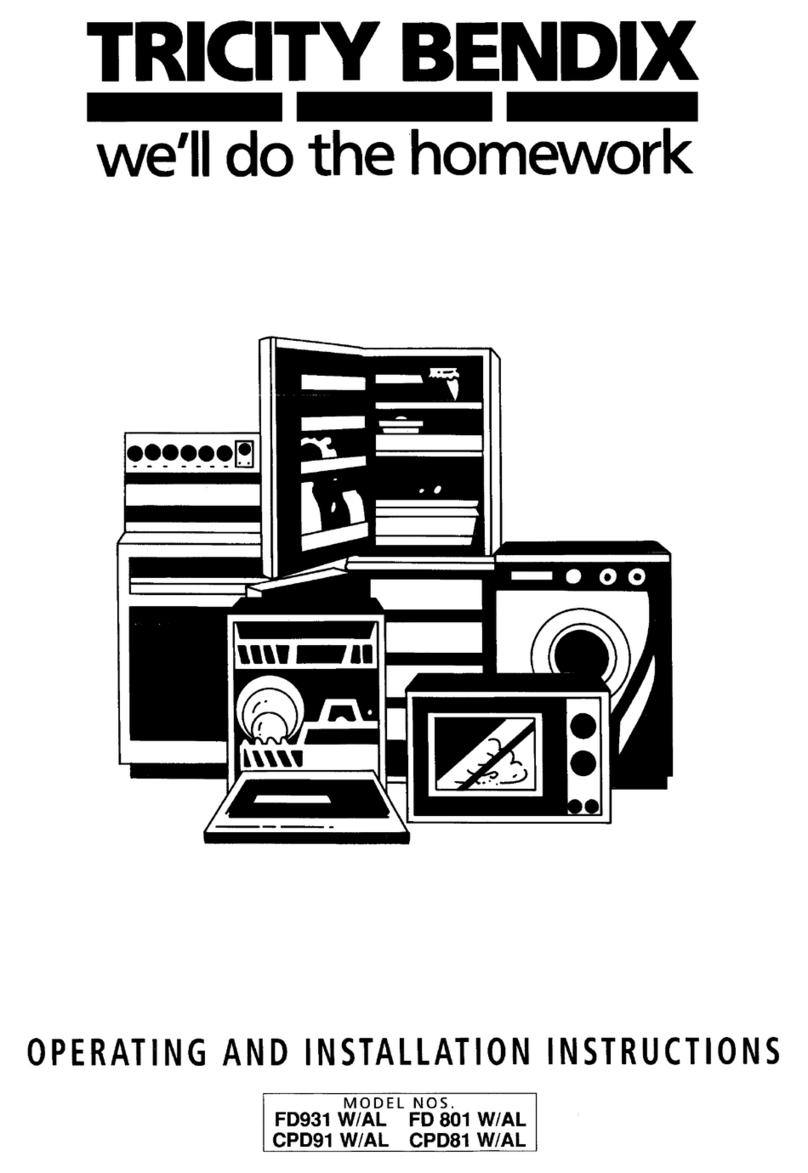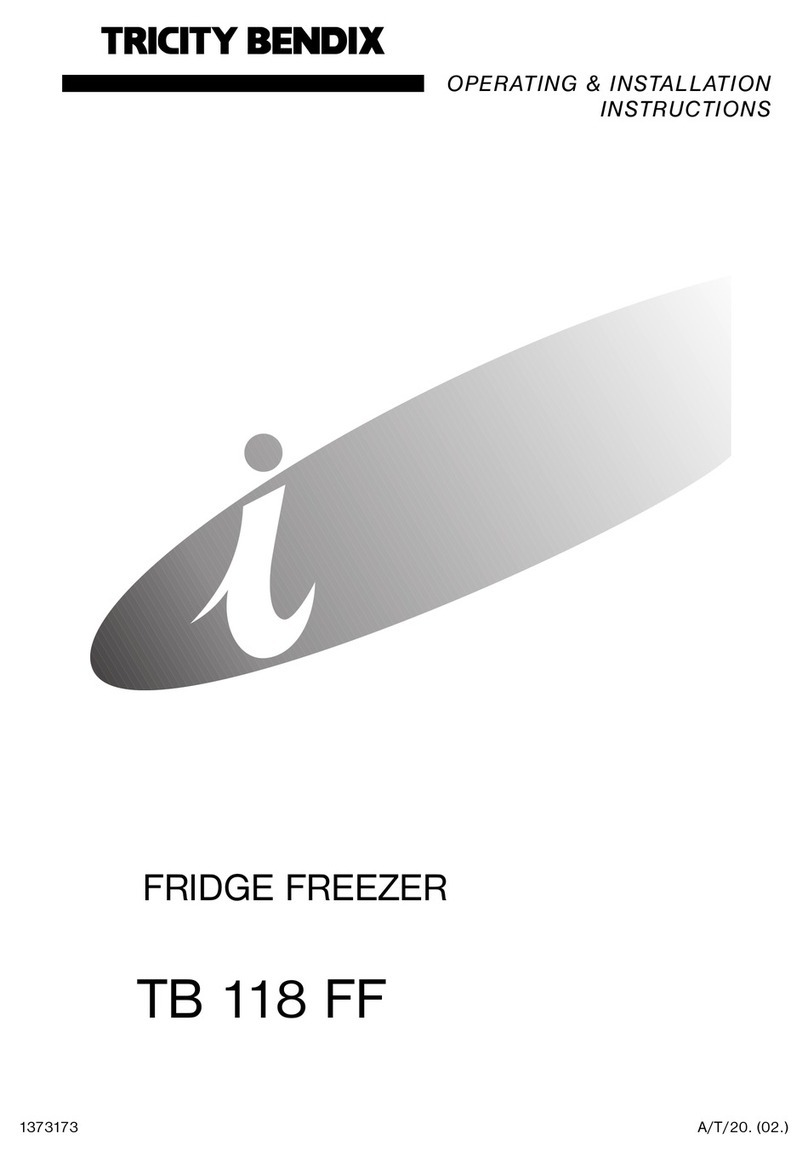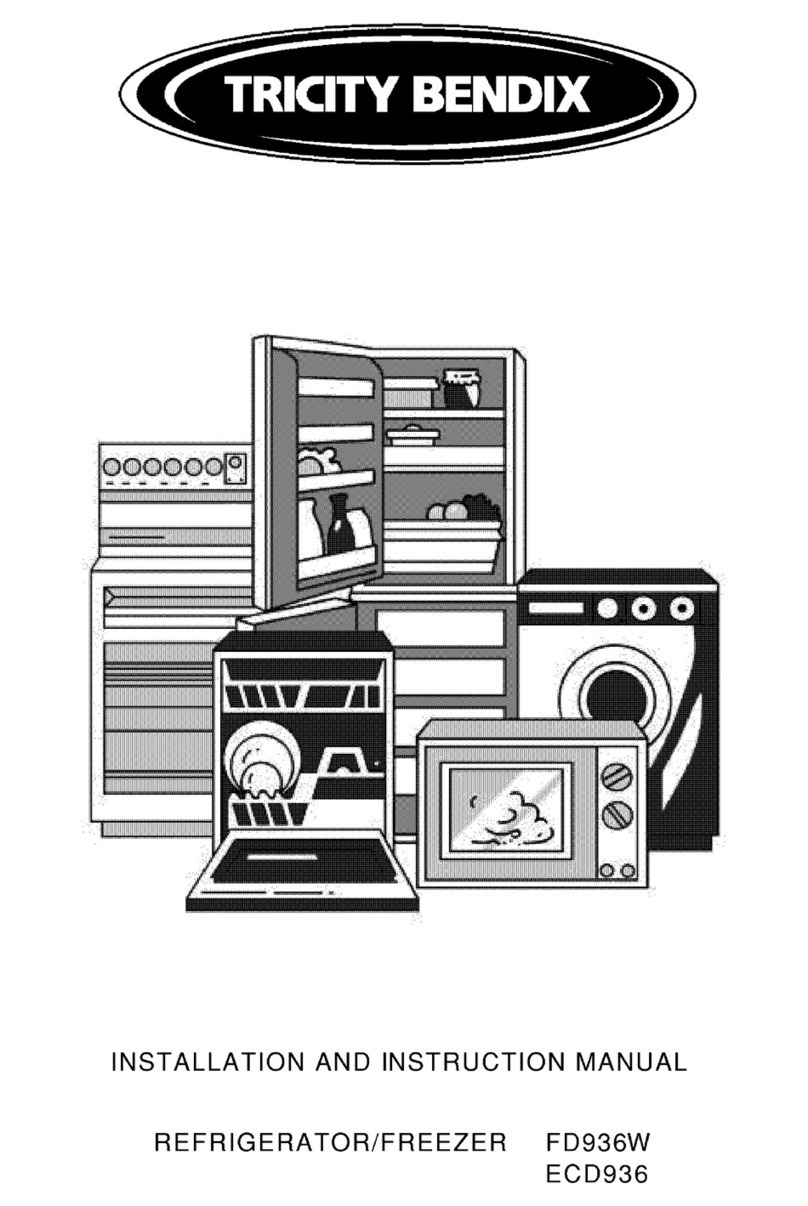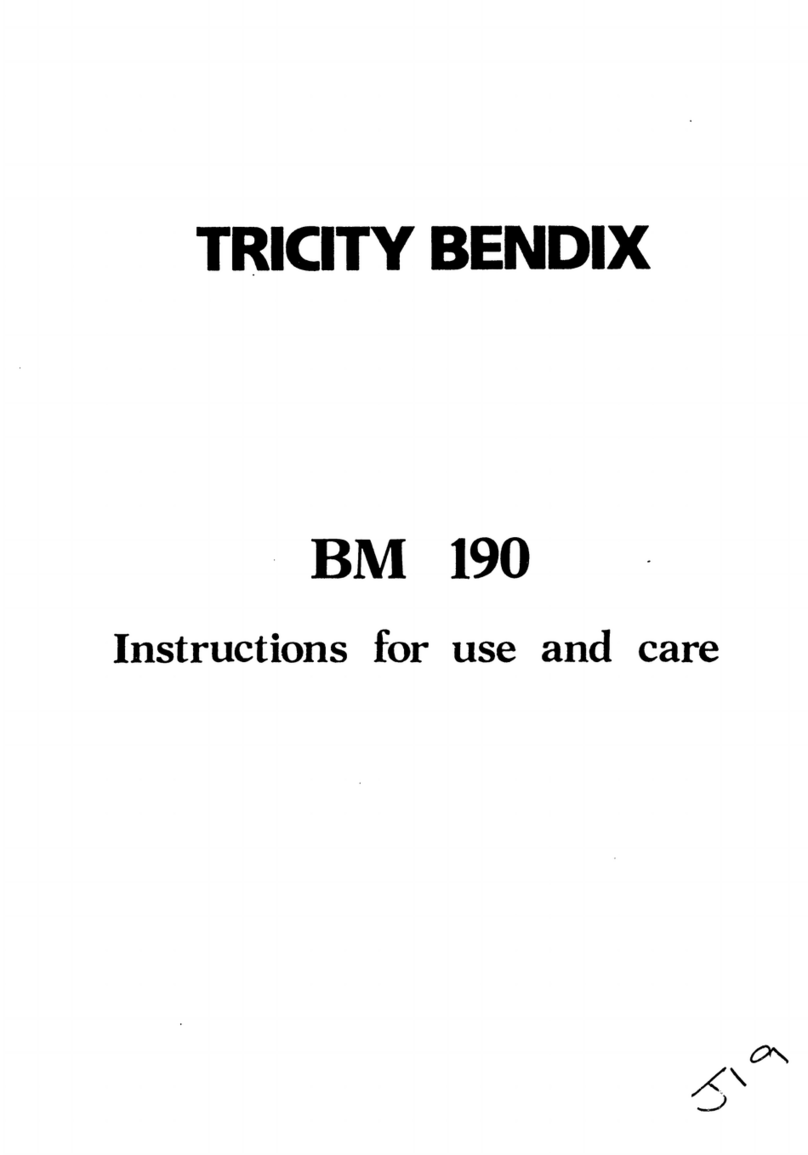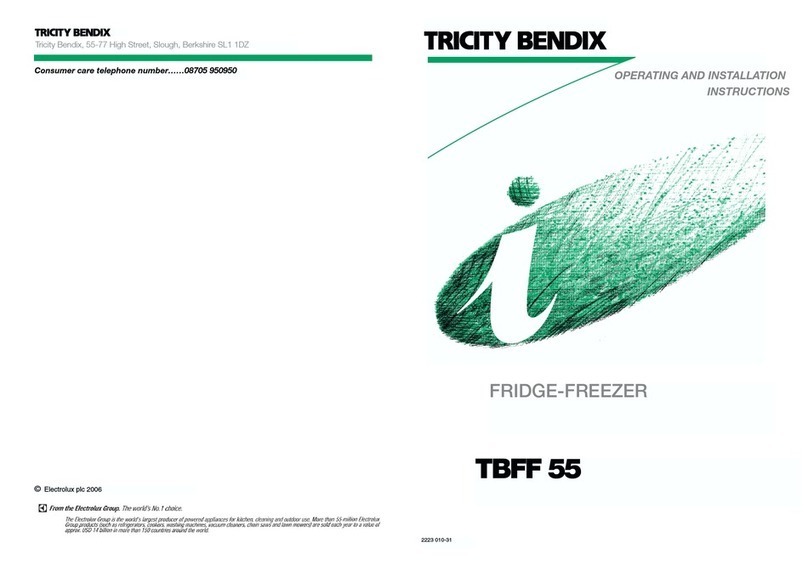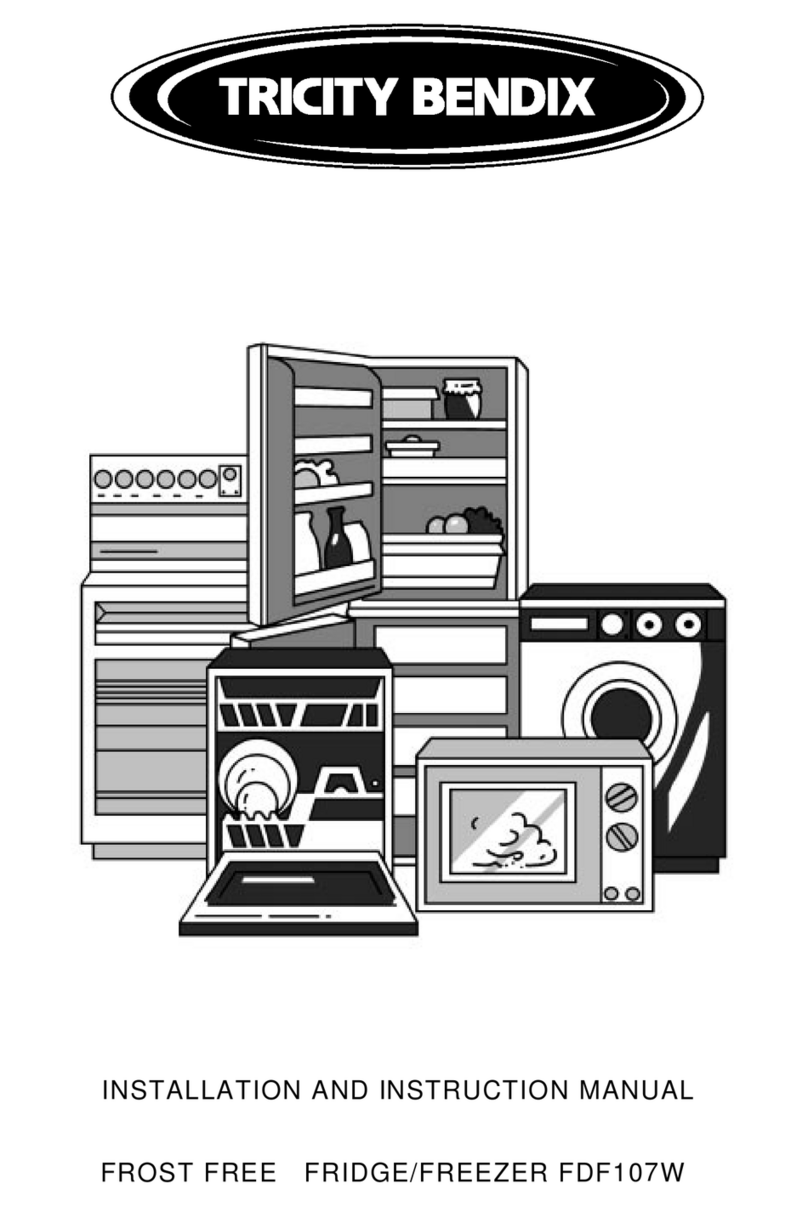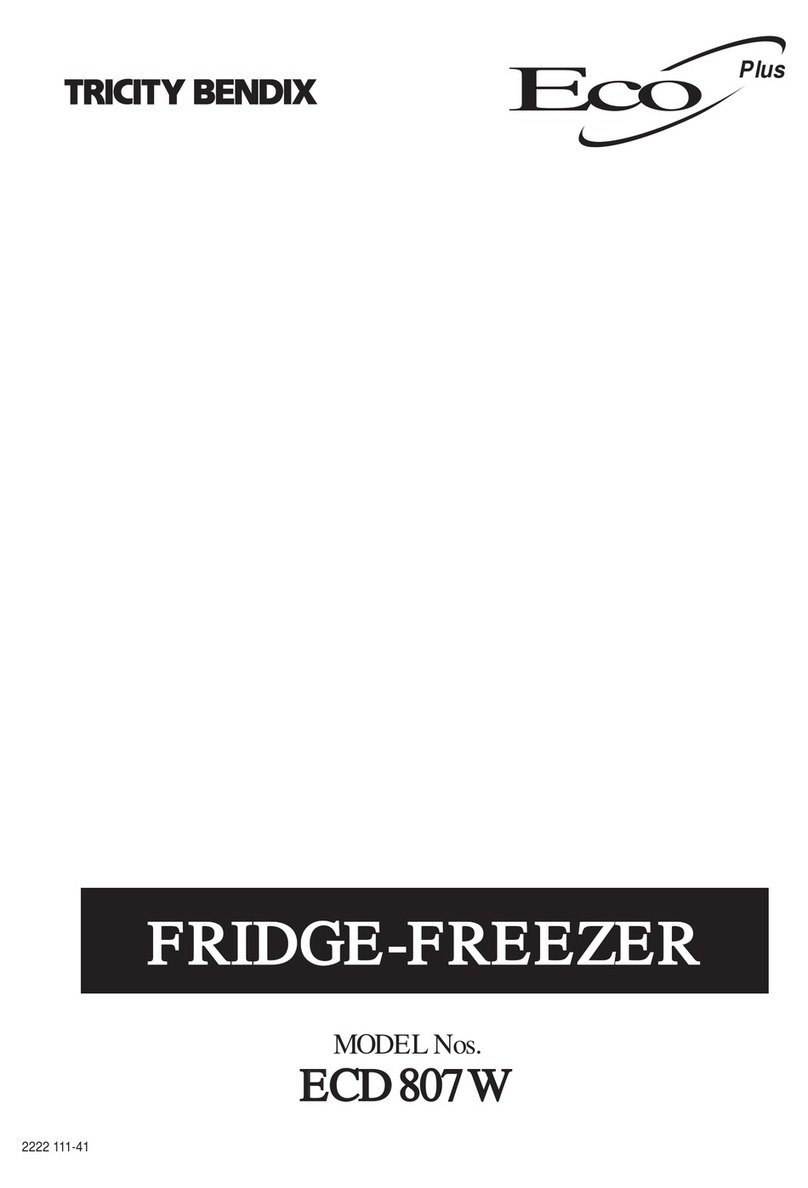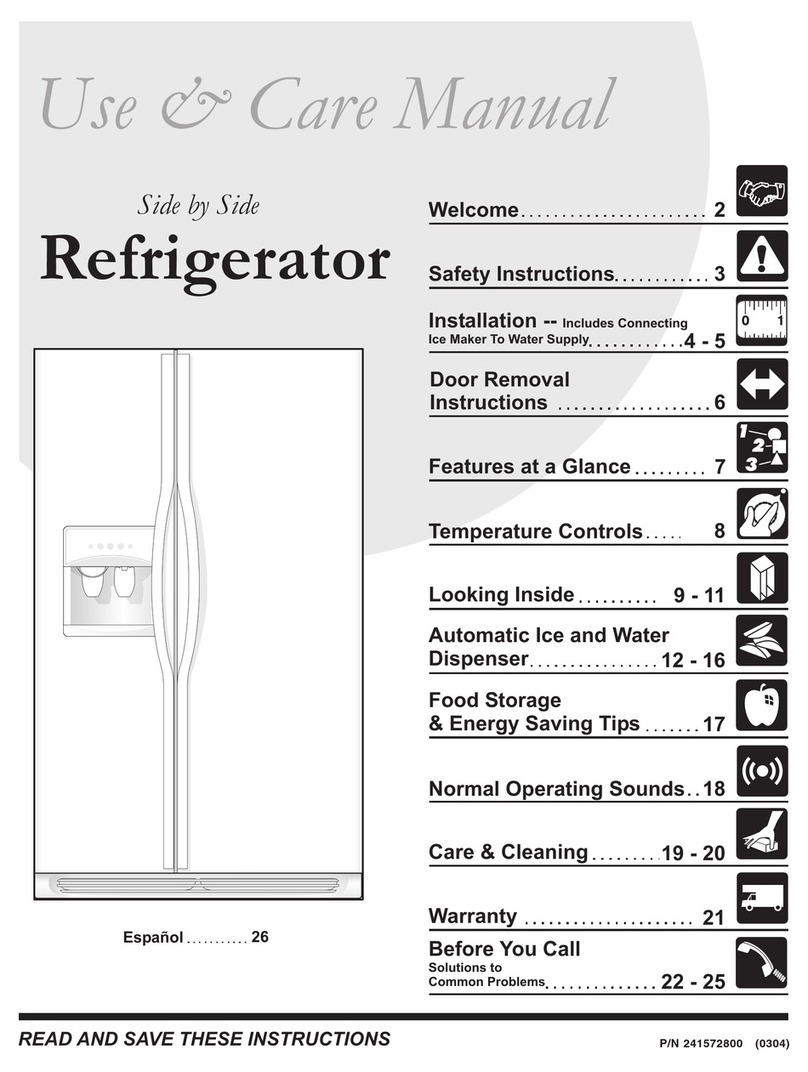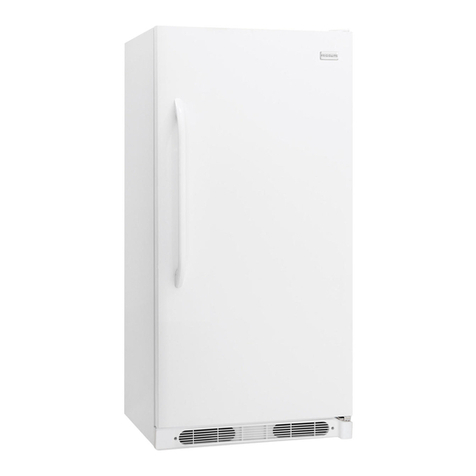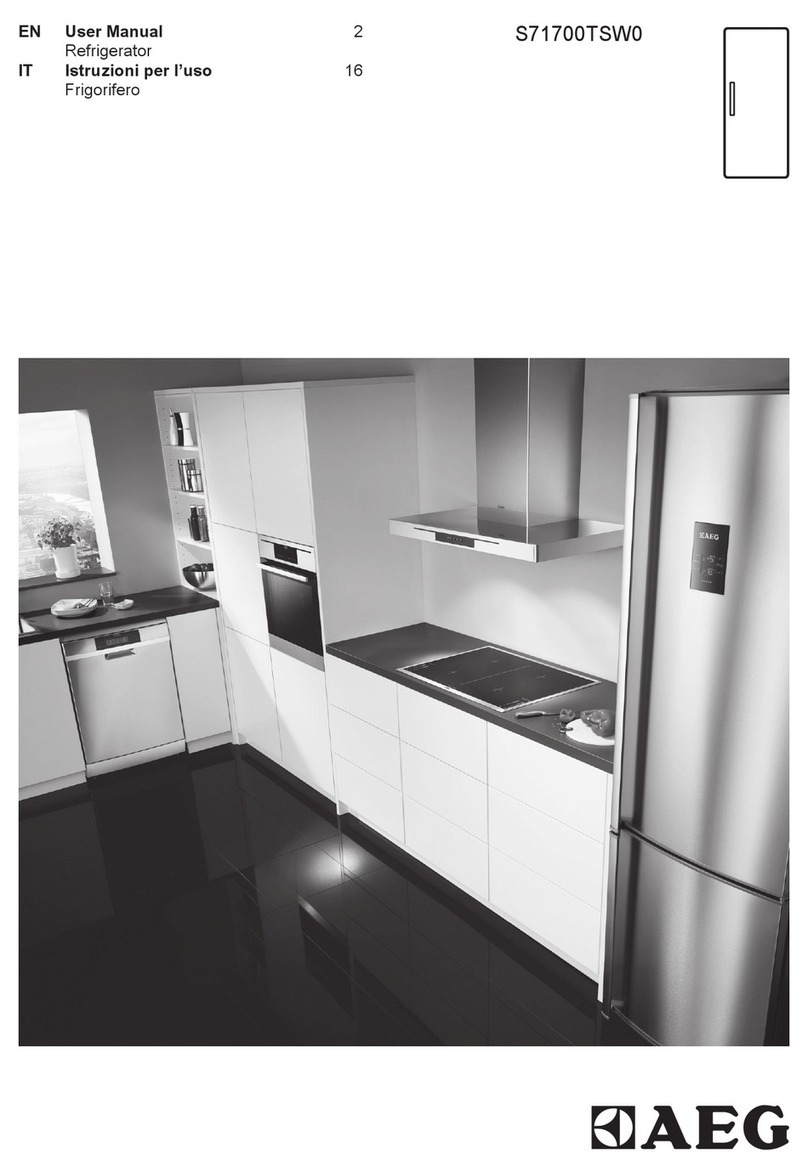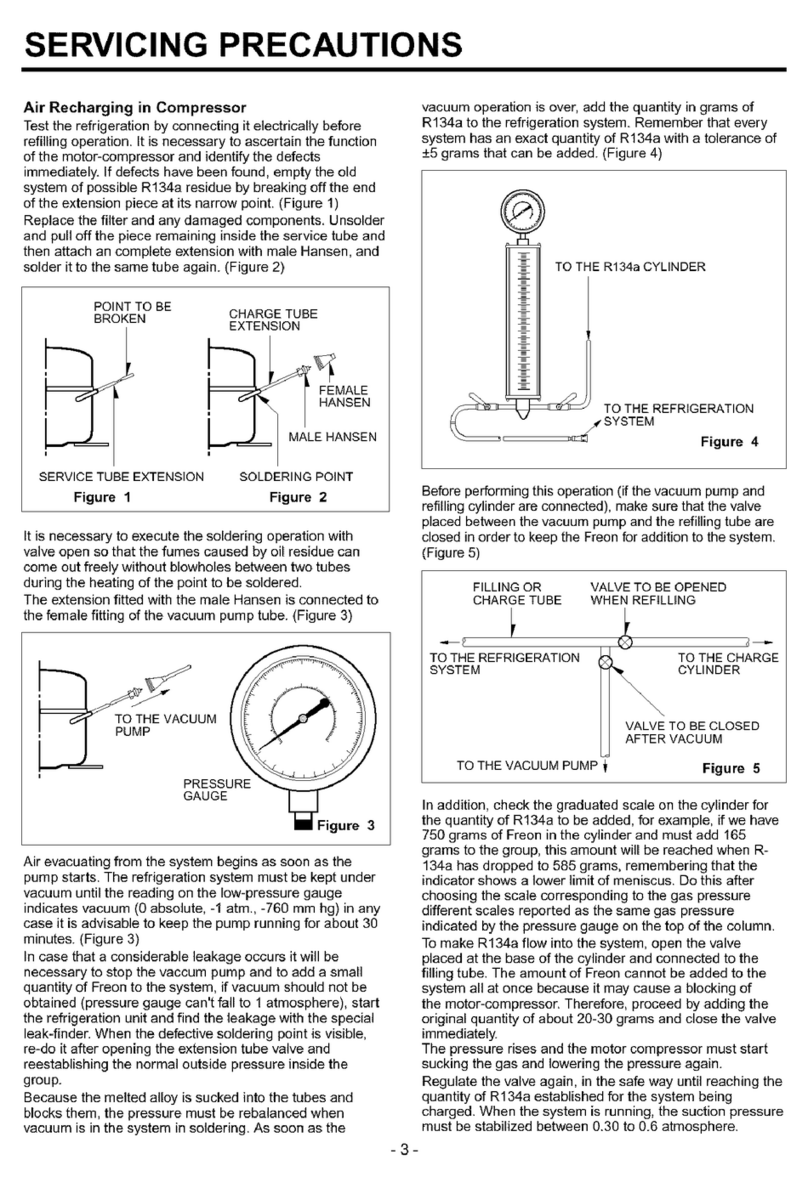
HEALTH AND SAFETY GUIDELINES
Because of consumer demand, preservatives have
been removed from many pre-prepared food. This
together with the changes in shopping habits to a
once-a-week shop, mean that safe handling and
storage of food is even more important than ever.
The following tips should help you to ensure that
the food in your home is in as perfect condition as
possible.
ªKeep the time between buying chilled food and
placing it in your fridge as short as possible. Tests
showed that the temperature of 1 litre of orange
juice rose to 22
°C in an hour between the super-
market and home. It then took 11 hours to get
down to 7°C in the refrigerator.
ªKeep the refrigerator door closed as much as pos-
sible. Remember that warm air is flowing in as you
are deciding what to have for tea!
ªDo not push food together too much, try to allow air
circulate around each item.
ªCool cooked food as quickly as possible but do
NOT place in the refrigerator or freezer until cool.
(Leave food in a place as cool as possible in order
that it can then be placed in the refrigerator or
freezer as soon as possible).
ªDo NOT mix raw and cooked meat, they must be in
separate containers. Take care not to let the meat
juices drip onto other food. If the meat does drip,
remove everything and clean thoroughly.
ªDo not store food uncovered.
ªThe best way to defrost food is to put it in the refrig-
erator to thaw slowly.
ªRemove suspect food from your refrigerator and
clean the interior with a solution of bicarbonate of
soda in warm water (5ml to 0.5 litre of water).
ªNever allow spillages to dry and harden.
ªEnsure that food placed in the freezer is dated and
labelled and used in date order to ensure that food
is consumed at its best.
ªIt is important that food is used before its “best be-
fore” date.
ªStore eggs in the egg rack provided in the refrigera-
tor door. Discard any broken or chipped eggs.
ªRegularly check the refrigerator door seal to ensure
that it is clean and free from bits and pieces.
ªAlways wash your hands with soapy water and dry
them with a clean towel before handling food.
ªKeep work surfaces clean and avoid cross contam-
ination by not using the same work surface or knife,
without washing them thoroughly in between.
ªUse kitchen roll wherever possible for cleaning up
food. If you use a dishcloth, be sure to boil it fre-
quently.
ªThe fresh foods to be frozen must be fresh and of
the best quality.
ªThe size of each pack should be small enough to
ensure that it is used in one go. Small packs freeze
more quickly and uniformly and give better results.
ªFrozen food, once thawed, must not be refrozen.
Lean food keeps better and longer than fatty food,
salt reduces the storage time.
ªWrap the food in polythene or aluminium freezing
bags or foil so that they adhere to the food and pro-
vide an airtight seal.
ªPackaging which is swollen or has traces of refro-
zen water droplets on the pack could indicate that
the product has not been kept at a suitable temper-
ature and that it may have lost its original quality.
Partially thawed food must not be refrozen, it must
be consumed within 24 hours. Never exceed the
storage times indicated.
ªNever place hot food, bottles or cans of fizzy drink
in the freezer as they may explode. Containers with
a lid must not be filled to the brim.
ªDo not open the door or place extra fresh food in
the freezer next to food which is already frozen as
this could cause the temperature of the frozen food
to rise and its quality and storage life to reduce.


